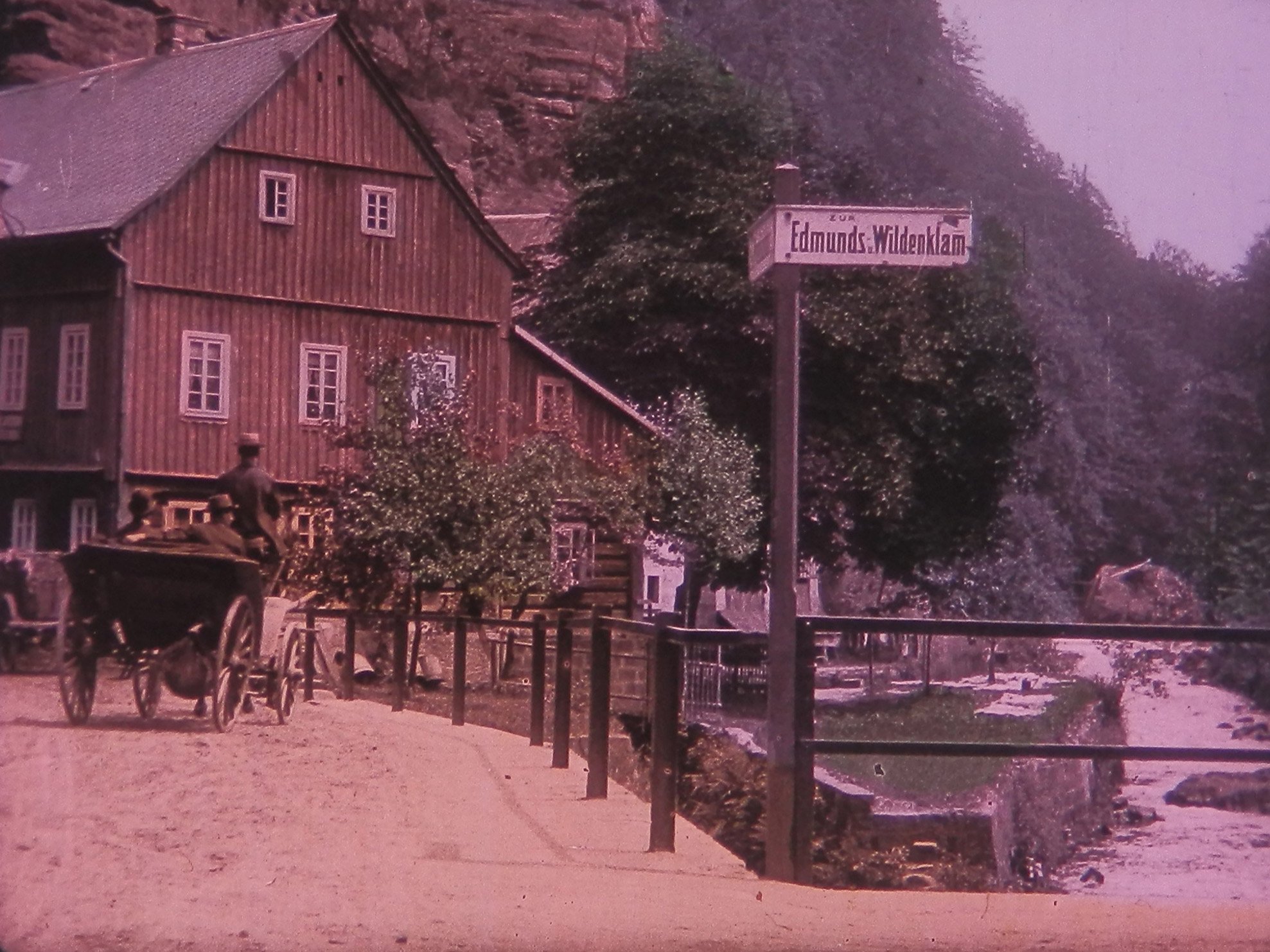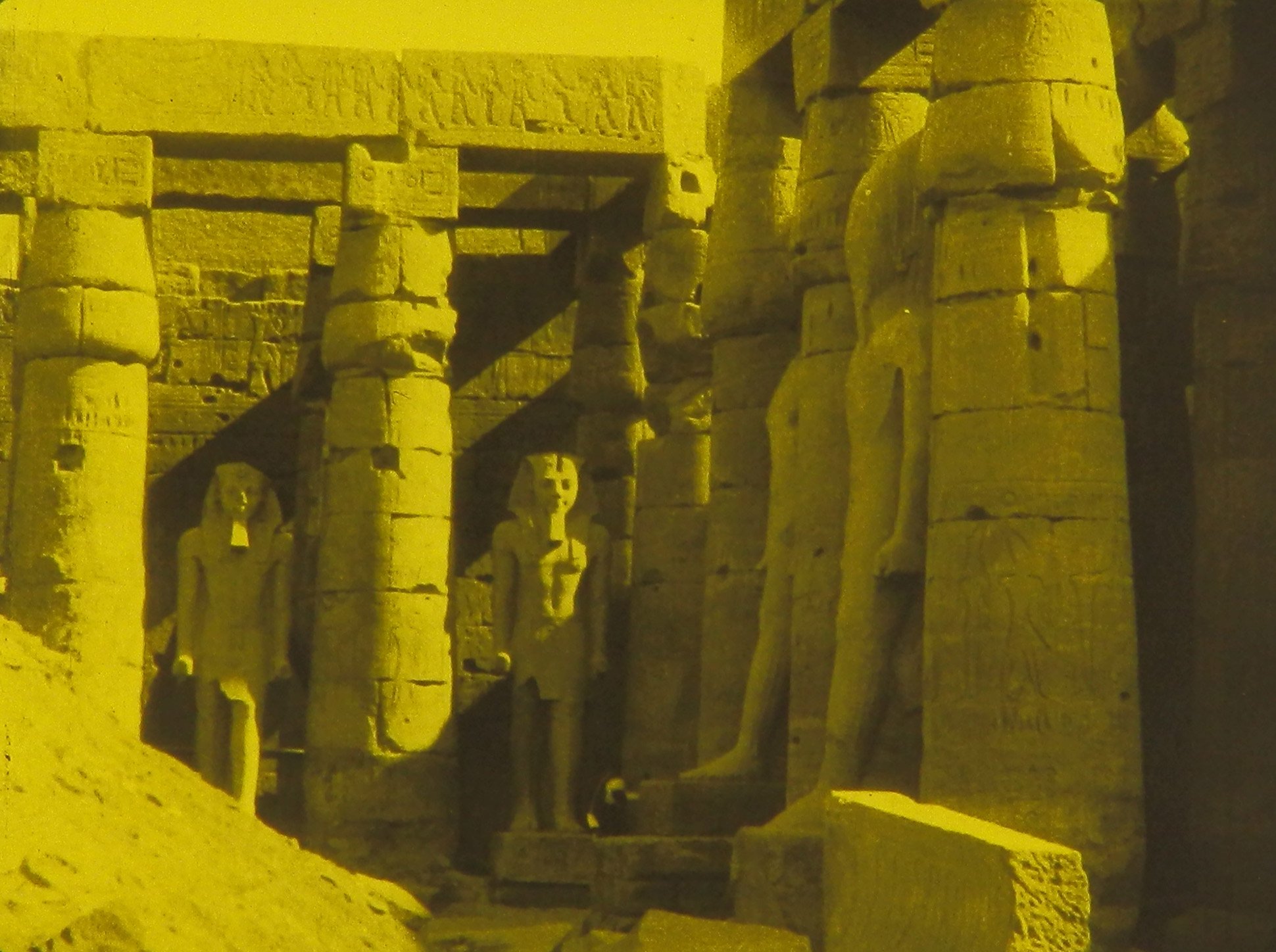
EARLY TRAVELOGUES
Early Travelogues
In the archival film collections of the Swedish Film Institute there is – as in almost every film archive – a backlog of film elements not yet catalogued or even identified. In Stockholm, some of these unidentified films are nitrate prints which came into the archive’s possession many years ago, before the Swedish Film Institute took over the historic film collections of Svenska Filmsamfundet, which was established in 1933.
Under a special project that took place in 2014 and 2015, more than 300 reels of nitrate film stock containing early international films were identified and catalogued. Some of these films turned out to be unique, with no other copies in existence elsewhere, and subsequently they were subjected to extensive preservation work. Even though they were not part of the country’s domestic film production, they still form an important part of Swedish film heritage as they were screened in Swedish cinemas. Additionally, they give us important clues about film culture at the beginning of the last century and they provide valuable information about early film distribution (such as the fact that some films were distributed with intertitles in other Scandinavian languages).
Some of these films are travelogues, which was a popular genre in the early days of cinema as they gave local audiences the chance to see glimpses of exotic faraway places that they could never dream of going to themselves. The first three of the four films in this programme all originate from colour nitrate prints – either tinted, toned or stencil-coloured (or sometimes a combination of those different techniques). The fourth film originates from a black-and-white nitrate print, and it also differs from the other films included the programme in the fact that it depicts the town of Gothenburg in the west of Sweden (probably the first-ever moving images of Sweden’s second biggest city) in a production seemingly made for a non-Swedish audience.
All the films in this travelogue programme have undergone restoration work in recent years at the Swedish Film Institute’s in-house photochemical laboratory, based on the original nitrate prints. The colours of the tinted and toned prints have been recreated using the Desmet method to make colour prints from new black-and-white duplicate negatives, while the colours of the stencil-coloured print have been recreated by making a print from a colour duplicate negative.
(Jon Wengström)
Excursion in the Edmunds Klamm Canyon in Suisse Saxonne
(Excursion dans la ravine d’Edmunds Klamm en Suisse Saxonne) (Germania Film, Germany, 1911)
35 mm, 108 m, 18 fps, 5’; coulour; intertitles: SE, subtitles: PL, EN
Preserved in 2015, from a stencilcoloured and tinted nitrate print.
Luxor and Thebes
(Louqsor et Thèbes) (Éclair, France, 1911)
35 mm, 100 m, 18 fps, 5’; bw, colour; intertitles: DA, subtitles: PL, EN
Preserved in 2016, from a bw, tinted and toned nitrate print.
On Lake Geneva
(Sur le Lac Léman) (Société Générale des Cinématographes Radios, Francja/France, 1913)
35 mm, 91 m, 16 fps, 5’; colour; intertitles: DA, subtitles: PL, EN
Preserved in 2019, from a tinted and toned nitrate print.
Gothenburg
(Göteborg) (?, ?, ca 1904)
35 mm, 18 m, 16 fps, 1’; bw
Preserved in 2017, from a bw nitrate print.
introduction to the movies: Svetlana Furman
section: TRAVELOGUES
music by: Pola Atmańska
SATURDAY | OCTOBER 30
21:00 | screening room: STOLICA
presented with: The Parson’s Widow


